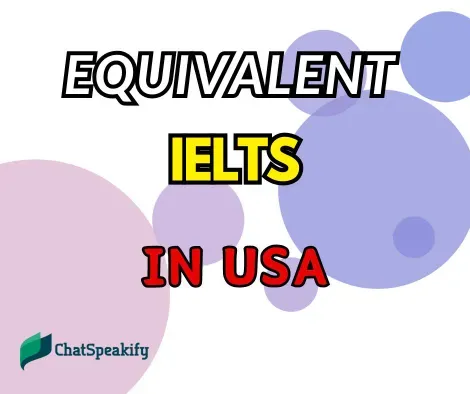When it comes to evaluating English language competency for overseas students, the Overseas English Language Testing System (IELTS) and the Test of English as a Foreign Language (TOEFL) are the most generally approved tests by universities and colleges in the United States. While both are widely acknowledged, individual institutions could have a preference for one exam over the other. As a result, it is critical to examine the unique criteria of your preferred universities before picking which exam to take.
IELTS vs. TOEFL: An Overview
IELTS (International English Language Testing System)
Structure: The IELTS assesses four key language skills: listening, reading, writing, and speaking. The test is divided into two formats—Academic and General Training. The Academic version is typically required for university admissions.
Scoring: IELTS scores range from 1 to 9 for each section, and an overall band score is calculated by averaging the individual scores.
Format: The IELTS has a unique format, including a face-to-face speaking segment with a trained examiner, which some candidates find more comfortable than speaking into a microphone.
TOEFL (Test of English as a Foreign Language)
Structure: The TOEFL iBT (Internet-Based Test) evaluates reading, listening, speaking, and writing skills. It is fully computer-based.
Scoring: TOEFL scores range from 0 to 30 for each section, with a total score out of 120.
Format: Unlike IELTS, the TOEFL speaking section involves responding to recorded questions through a microphone, which may suit those who are more comfortable with computer-based interactions.
Key Differences
Exam Format and Delivery
TOEFL: Primarily internet-based, all sections are completed on the computer. The speaking section requires answering prompts via a microphone.
IELTS: Paper-based or computer-based for all sections except the speaking section, which involves direct interaction with an examiner.
Scoring System
TOEFL: Scores each section from 0 to 30, leading to a total score of 120. Universities generally require scores ranging from 70 to 100.
IELTS: Each section is scored from 1 to 9, with an overall band score given as the average of the four sections. Universities typically require band scores ranging from 6.0 to 7.5.
Which Should You Choose?
Institutional Preferences
Generally, U.S. universities do not have a strong preference for either the IELTS or TOEFL as long as the applicant meets the required scores. Both tests are widely accepted as measures of English proficiency. The key is to check the specific requirements for the institution or program to which you are applying, as some might have particular score requirements or recommendations. For instance:
Harvard University: Accepts both IELTS and TOEFL but requires a minimum score of 7.5 for IELTS and 100 for TOEFL.
Stanford University: Accepts both tests and recommends a minimum score of 7.0 for IELTS and 100 for TOEFL.
Test Availability and Personal Comfort
Consider your own testing preferences and what format you feel more comfortable with. If you are more comfortable with face-to-face communication, IELTS might be the better option. If you prefer an entirely computer-based format, TOEFL could be more suitable.
Conclusion
Both the IELTS and TOEFL are accepted by the majority of U.S. institutions. Your choice should be guided by the specific requirements of the universities you are applying to as well as your own strengths and preferences. Thoroughly researching and preparing for the chosen test can significantly enhance your chances of attaining the required scores.
References
ETS TOEFL Official Site
IELTS Official Site
Harvard University Admissions
Stanford University Admissions
Feel free to delve deeper into the specific guidelines and preparation resources provided by these tests’ official websites to make an informed decision. Happy studying!
